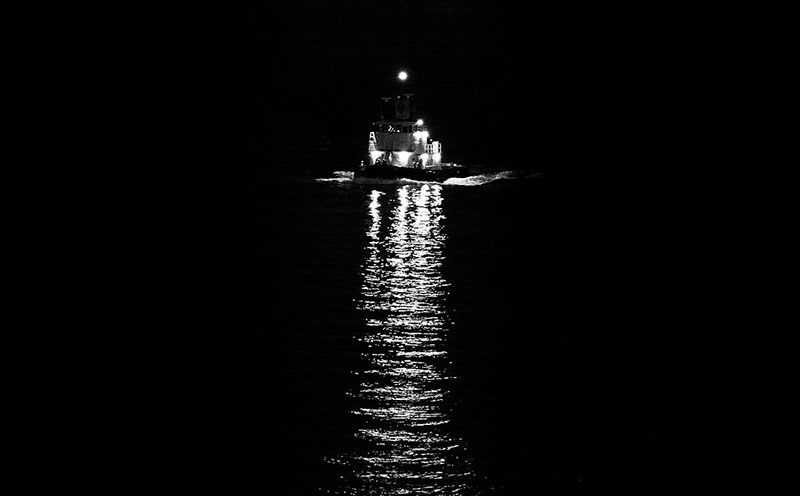In previous blogs I’ve addressed navigational lighting from the Nautical Rules of the Road and suggested that you think about upgrading your incandescent navigation lights to the modern super-bright and long-life LED lights. Lighting is a good thing, but being seen and preventing collisions is even better.
Can navigational lights be a bad thing? A recent near miss involving lights brought this to mind. The Nautical Rules of the Road clearly spell out what lights are to be on, when and where. Showing other vessels where you are, what you are doing, and which way you are moving remains an important safety consideration.
It seems to have become an industry habit to leave running lights showing even when moored up against a pier or nested alongside another vessel. I’ve seen it everywhere towing vessels operate, so the bad habit isn’t exclusive to coastal or river environments. I’m not sure why boats do it, but some I’ve asked say they forget to turn them off when they dock. Others have said lights are left on to avoid forgetting to flip the switch before getting underway again. The most ridiculous reason I heard was that keeping them on all the time, day and night, moored and underway, saves wear and tear on the bulbs and switches when turning them on and off. Really?
The recent near-miss situation involved a vessel moored up alongside barges in a fleeting area and showing its running lights. When an underway boat came around the bend, he found quite a bit of back lighting along the shore, and other commercial and recreational traffic all showing lighting. A classic scenario we’ve all experienced.
The moored vessel with running lights on surprised and confused the underway pilot, who was already making a tough turn and trying to dodge all of the traffic that he thought was coming at him – including the moored boat with his running lights showing. The pilot tried calling the moored vessel and got no reply because the wheelhouse wasn’t manned. A moored vessel with running lights shining won’t show up on VTS, and maybe not appear correctly on AIS either. Confusion and the absence of communication is a recipe for accidents.
One can argue that pilots should know where the fleeting and mooring areas are located and shouldn’t sweat those lights, but the Rules distinguish clearly between navigational lighting, moored, underway, or making way. Do your brethren a favor and simplify the mass of lights to be contended with. Wouldn’t you appreciate the same courtesy? When you are moored, extinguish those running lights – but do remember to put them on again when getting underway in darkness or restricted visibility. It’s on your checklist. Right? (You do have a checklist for getting underway, don’t you? Just checking.)
Also, a friendly reminder that the 2016 hurricane season starts now! Getting ready is a better move than getting lucky.
Sail Safe!




